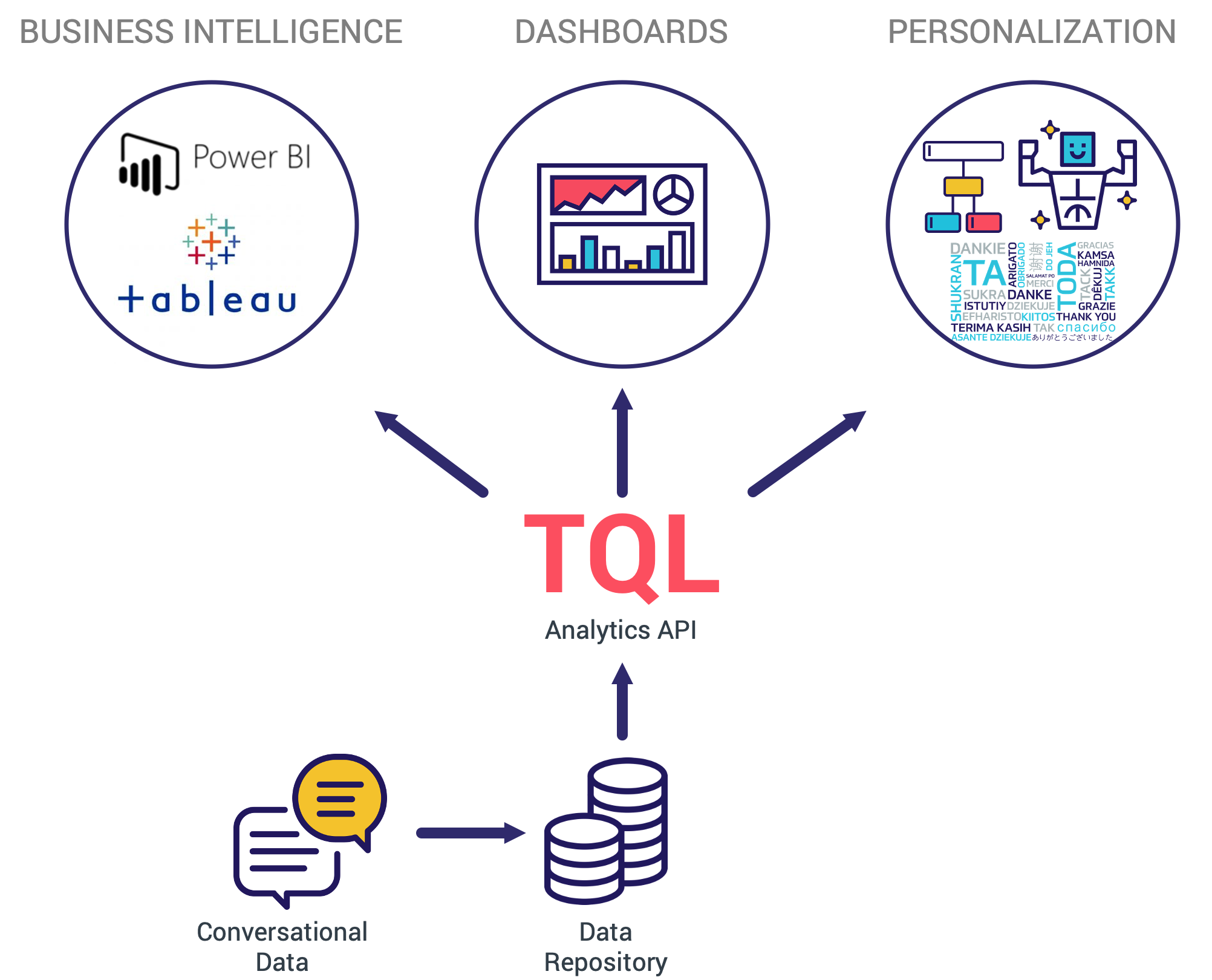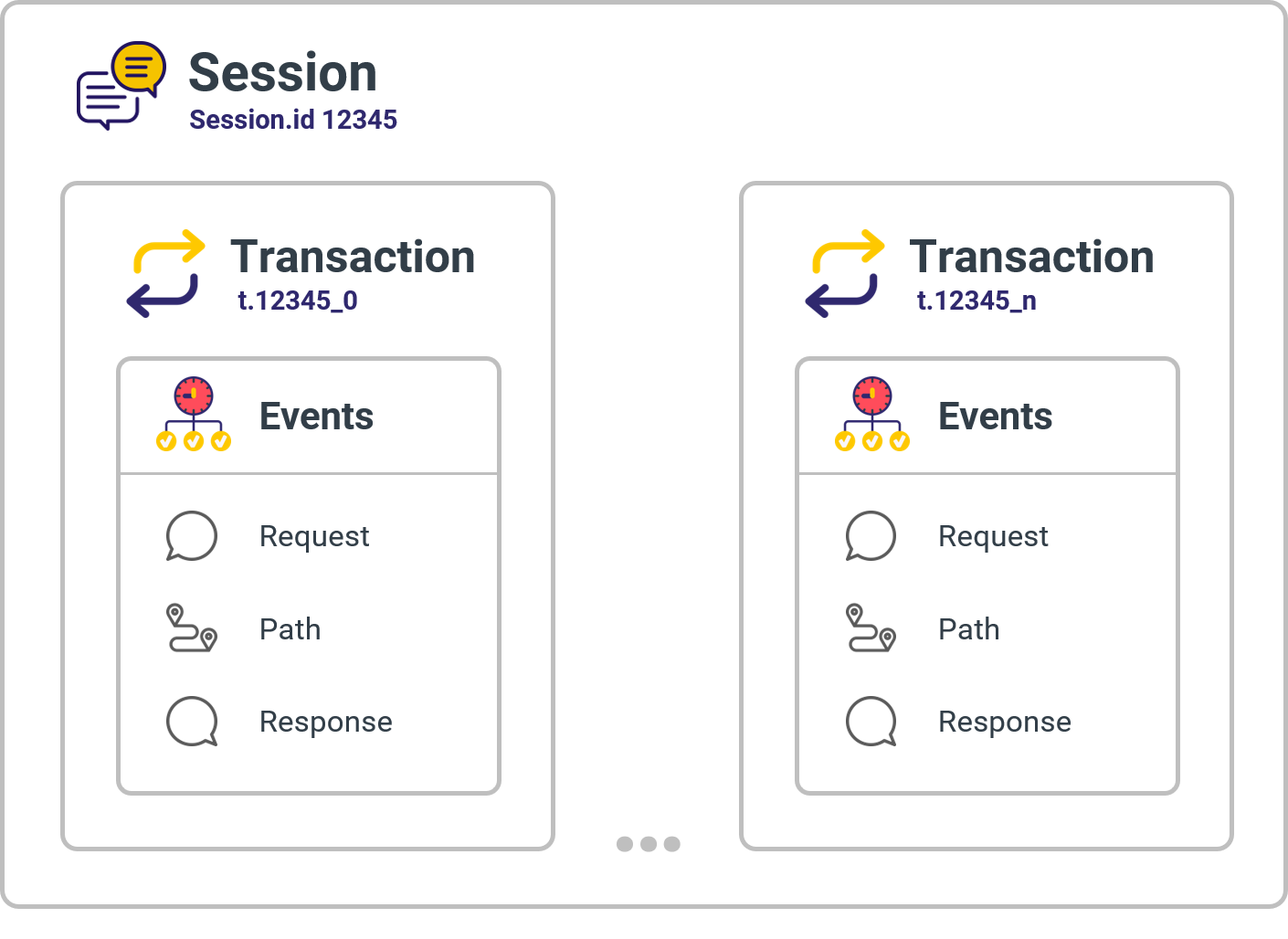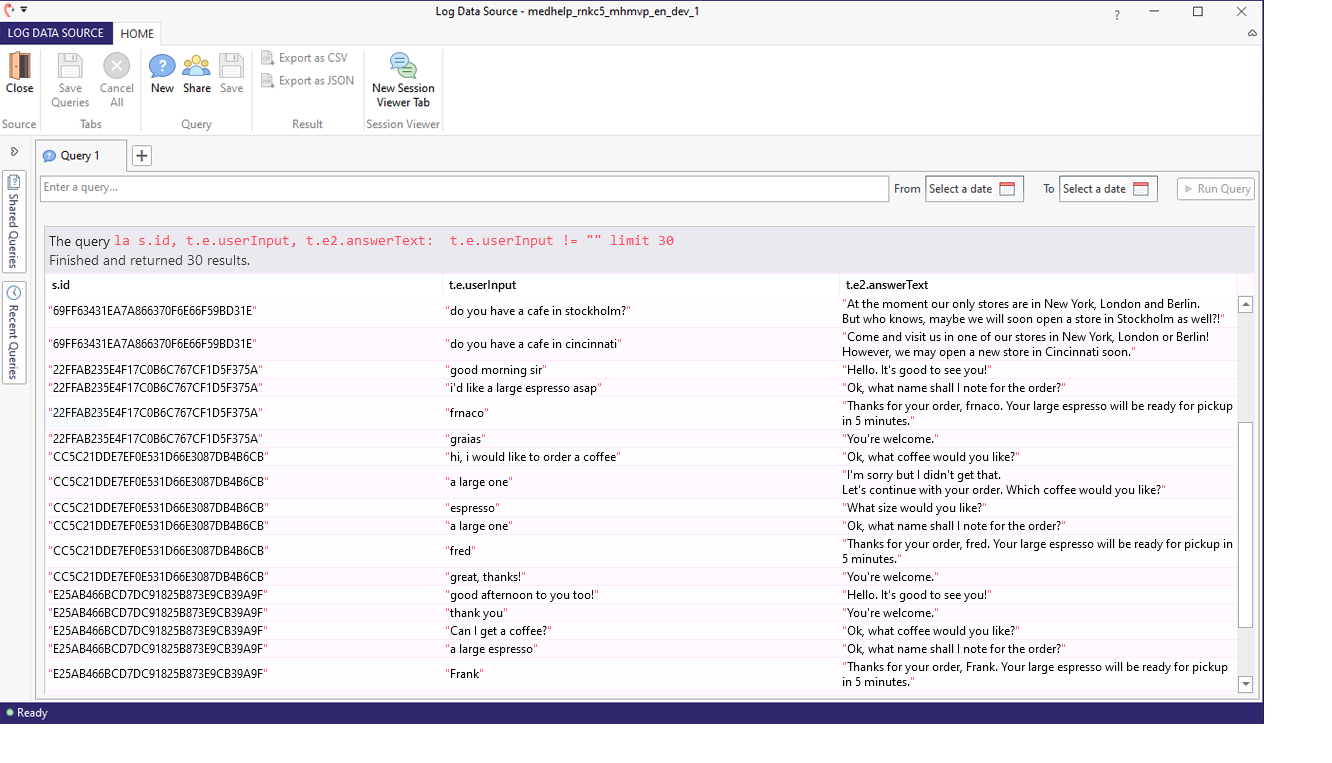Analyze your bot
Once you've built your bot in Teneo Studio and deployed it to a Teneo Engine, the users of your bot will start generating conversational data.This data is a helpful source of information for improvement and can provide valuable business insights. This section helps you to make the most of your data.
In this 'Analyze your bot' section, you will learn how to:
- Analyze conversational log data generated by your users.
- How to use Metadata and Augmenters to retrieve information.
- Make the most of the Teneo Query Language (TQL).
Analyze Log Data
The conversational data that is generated by the users of your bot is a valuable source of information for improvement, but can also provide you with valuable business insights.
Business insights are normally set up to be extracted with Augmenters in combination with Metadata and they can then be displayed in normal reporting tools such as Microsoft Power BI for easy consumption by stakeholders within your business.
You can access your bot's data in the Log Data tab in Teneo Studio. In this tab, you can find the conversational logs as soon as a session ends, which allows for fast analytics of conversations. The Log Data tab features functionality to query the data repository using the Teneo Query Language (TQL) and to step inside sessions (conversations) to inspect the details of the conversation. Additionally, it also features functionality to export the data which you can use to import to other BI tools which may already be deployed within the organization.
Session data is stored in Teneo in the Log Data Source (LDS). The following video demonstrates how to open the LDS and find the most recent sessions.
Teneo Query Language
Teneo Query Language (TQL) allows you to analyze the conversational logs generated by your published bot. You can think of it as a tool similar to SQL in that it helps you to examine, analyze, and understand huge amounts of data. TQL offers a versatile syntax to extract information about how users interacted with your system.
With our own TQL, developers can:
- See what users are saying to your bot
- Troubleshoot and improve conversations
- Generate important KPIs such as amount of traffic, Safetynet occurrences, etc.
- Locate particular constellations of events, e.g. a variable changing while a particular flow was active
- And much more!
This diagram illustrates how Teneo, a dashboard, or any other client application interacts with a log data source contained in the Inquire backend.

You can find more information on TQL in the TQL Syntax overview, TQL Reference guide, and TQL Cookbook.
Data hierarchy
| Concept | Description | Access prefix |
|---|---|---|
| Property | The basic queryable elements in the data: can be located in sessions, transactions, or events | - |
| Session | A collection of transactions documenting a user's interactions with the system | s. |
| Transaction | A collection of events starting with a request (user input) and ending with the bot's response | t. |
| Event | A record of the entire path through the solution leading to a response | e. |

Query syntax
The Teneo Query Language, TQL, provides a versatile set of possibilities for exploring your data. At first glance, a typical query might appear overwhelming, because of the special syntax and the amount of notation used. However, once you know how to read a query, it will start to become second nature.
Let's take a commonly used query as a starting point and break it down into its individual parts:

The result of the query is to list 30 input/output pairs, along with the ID of the session they belong to:
